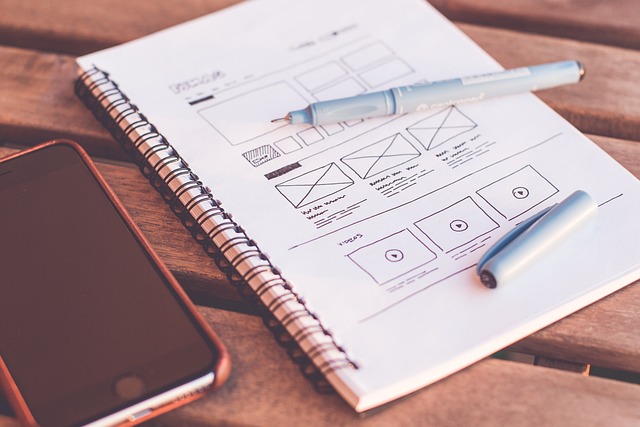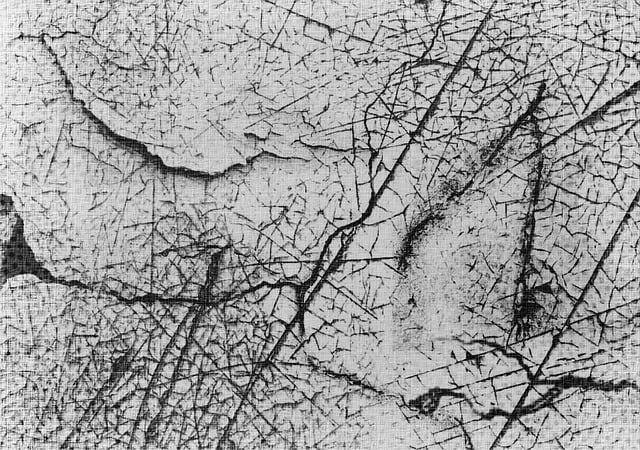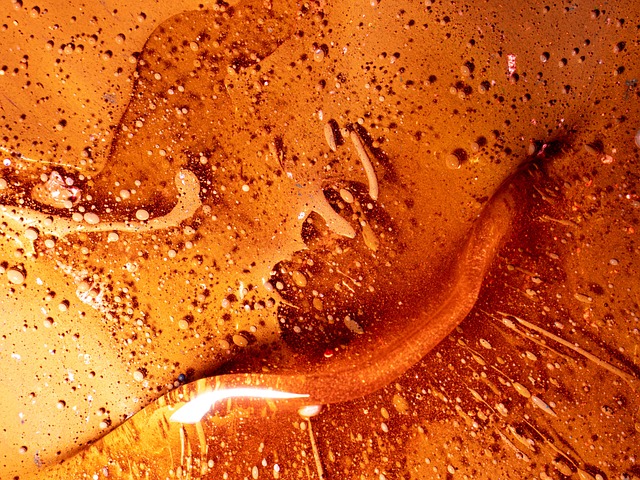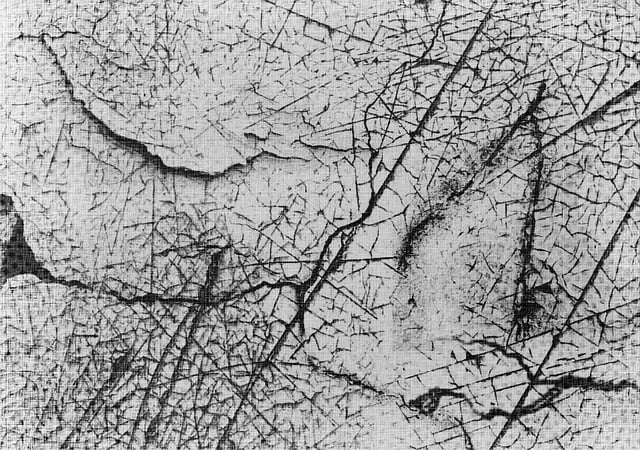In contemporary creative web design, breaking from tradition, leveraging advanced technologies like responsive design, 3D graphics, and micro-interactions, designers craft visually stunning, highly interactive interfaces that engage users emotionally. Graphic design has evolved from print media to a dynamic digital discipline, focusing on accessibility, usability, and cross-platform compatibility. Key trends include minimalism for clean aesthetics, interactive elements enhancing user experience, responsive design catering to mobile usage, and accessible practices ensuring inclusive design. Typography is celebrated as a crucial element, transforming text into visually compelling elements that guide users through content effectively while improving readability. These innovations transform websites into immersive destinations, surpassing traditional media experiences.
In the dynamic realm of digital creativity, creative web design stands as a powerful tool to captivate audiences and elevate user experiences. This article delves into the multifaceted world of innovative graphic and web design, exploring how artistic visions are transforming online spaces. From the evolution of graphic design from print to digital, to the latest trends shaping creative landscapes, we unravel the secrets behind engaging user journeys. Discover the art of storytelling through visuals, the strategic use of typography for enhanced readability and aesthetics, and the psychology of color in capturing attention. Additionally, we examine interactive elements, responsive design, and glimpse into the future where AI plays a pivotal role in shaping the next frontier of creative web design.
# Creative Web Design: Pushing Boundaries and Captivating Audiences

In the realm of creative web design, pushing boundaries has become a defining trait of captivating audiences. Designers are no longer confined to traditional layouts and static elements; instead, they embrace dynamic interactivity, immersive storytelling, and innovative use of space to craft engaging user experiences. By integrating cutting-edge technologies like responsive design, 3D graphics, and micro-interactions, web designers create visually stunning and highly interactive interfaces that transcend the ordinary.
This evolution in creative web design is driven by a desire to break free from conventional norms and engage users on a deeper level. Modern audiences crave experiences that are not only visually appealing but also emotionally resonant. Through intuitive navigation, seamless user journeys, and compelling visual narratives, designers achieve the remarkable feat of turning websites into captivating destinations where users can explore, interact, and immerse themselves in ways that traditional media cannot match.
<section id="the-evolution-of-graphic-design–from-print-to-digital“>
The Evolution of Graphic Design: From Print to Digital

Graphic design has undergone a remarkable transformation, especially with the digital revolution. What once was predominantly a print-focused field has evolved into a dynamic and multifaceted discipline, with creative web design taking center stage. The shift from traditional printing to digital platforms has opened up new avenues for designers to explore, allowing them to create visually stunning and interactive experiences.
In the early days, graphic designers primarily worked on creating layouts for newspapers, magazines, and advertising materials. With the advent of the internet, the industry witnessed a paradigm shift. Designers started to focus on web design, developing visual elements for websites, user interfaces, and digital marketing campaigns. This evolution has not only broadened the scope of their creativity but also required them to adapt and learn new skills, ensuring they stay relevant in a rapidly changing digital landscape.
– Explore how graphic design has transformed from traditional print media to the digital realm, highlighting key shifts in tools, techniques, and audience engagement.

The evolution of graphic design from print to digital has been nothing short of revolutionary, reshaping both the designer’s toolkit and the way content is consumed. Traditional print media, once the sole domain of typography and illustrations, now shares the stage with dynamic, interactive creative web design. Designers now have an extensive array of digital tools at their disposal, enabling them to craft visually stunning experiences that engage audiences in unprecedented ways. The shift from static images to multimedia elements, animations, and responsive layouts has opened up new avenues for creativity and user interaction.
In the digital age, graphic designers must adapt to a more diverse audience and varying consumption patterns. This transformation has led to a focus on accessibility, usability, and cross-platform compatibility. Creative web design emphasizes not just aesthetics but also functionality, ensuring that designs translate seamlessly across devices and browsers. With the rise of mobile technology, designers now prioritize user experience (UX), creating intuitive and visually appealing interfaces tailored for smaller screens while maintaining brand consistency and effective communication.
<section id="web-design-trends-shaping-the-creative-landscape“>
Web Design Trends Shaping the Creative Landscape

The ever-evolving digital landscape continues to shape the creative web design industry, with trends that push boundaries and redefine user experiences. One prominent trend is the rise of minimalism, characterized by clean lines, ample white space, and a focus on simplicity. This aesthetic not only enhances visual appeal but also improves site navigation, ensuring users can effortlessly find information. Additionally, the integration of interactive elements such as animated graphics, video backgrounds, and dynamic content is transforming static websites into immersive experiences, capturing user attention in unique ways.
Responsive design has also become a cornerstone of modern creative web design, enabling seamless adaptation across various devices and screen sizes. As users increasingly access the internet through smartphones and tablets, this trend ensures that websites maintain their aesthetic and functionality, providing a consistent experience regardless of platform. Moreover, the increasing emphasis on accessibility guarantees that diverse audiences can engage with digital content, reflecting a growing awareness of inclusive design practices within the industry.
– Discuss the latest trends dominating creative web design, including minimalism, micro-interactions, and 3D elements, and their impact on user experience.

In the realm of creative web design, several latest trends are reshaping user experiences with their aesthetic appeal and interactivity. Minimalism stands out, emphasizing clean layouts, simple typography, and restrained color palettes to enhance usability and focus user attention on essential elements. This trend not only makes websites visually appealing but also improves page load times and optimizes for mobile screens, contributing to a better user experience.
Additionally, micro-interactions and 3D elements have gained prominence in enhancing creative web design. Micro-interactions—subtle animations or feedback triggered by user actions—add a layer of delightfulness to user engagement. Meanwhile, the integration of 3D graphics brings depth and realism to websites, making content more immersive and interactive. These trends significantly impact user experience by fostering higher engagement, improving navigation intuitiveness, and creating memorable brand interactions, thereby driving conversions and enhancing overall website performance.
<section id="storytelling-through-visuals–crafting-engaging-user-journeys“>
Storytelling Through Visuals: Crafting Engaging User Journeys

In contemporary digital landscapes, storytelling through visuals is a potent tool that captivates users and fosters deeper engagement. Creative web design transcends mere aesthetics by weaving narratives that resonate with audiences on an emotional level. Through strategic use of color, typography, imagery, and layout, designers can guide users through a journey that enhances their experience and leaves a lasting impression. Each visual element contributes to the overall narrative, ensuring the message is clear, compelling, and memorable.
Whether it’s showcasing a product’s unique features, narrating a brand’s story, or guiding users through a complex process, visually engaging content keeps them captivated. This approach not only enhances user satisfaction but also increases retention rates and encourages exploration. By crafting immersive visual journeys, designers can transform abstract concepts into tangible experiences, ultimately elevating the overall effectiveness of digital communication in creative web design.
– Delve into the art of storytelling in web design, where visuals become the narrative, creating immersive experiences that draw users in and keep them engaged.

In the realm of creative web design, storytelling has evolved beyond mere text and static images. Today, graphic designers and web developers weave visuals into captivating narratives that users can interact with and immerse themselves in. By leveraging dynamic animations, interactive elements, and responsive layouts, designers craft experiences that engage multiple senses, drawing visitors deeper into the content. This shift towards immersive storytelling not only enhances user engagement but also allows brands to convey complex ideas and emotions more effectively.
Visuals, when thoughtfully incorporated, become the guiding threads that take users on a journey through a website or web application. Whether it’s a series of captivating illustrations, meticulously designed typography, or stunning 3D graphics, each element contributes to building an emotional connection with the audience. By understanding the power of visual storytelling, designers can create dynamic and memorable experiences that differentiate their brands in an increasingly crowded digital landscape.
<section id="-typography-as-a-design-tool–enhancing-readability-and-aesthetics“>
Typography as a Design Tool: Enhancing Readability and Aesthetics

Typography plays a pivotal role in innovative graphic and web design, offering designers a powerful tool to enhance both readability and aesthetic appeal. By carefully selecting fonts, adjusting spacing, and orchestrating layout, designers can transform plain text into visually captivating elements that engage users. In creative web design, typography becomes the silent architect, guiding visitors through content with subtle elegance or bold statements, depending on the desired tone.
Effective use of typography goes beyond mere visual appeal; it significantly improves user experience. Well-chosen typefaces and masterful layout ensure that text is easily scannable, facilitating quick comprehension. This is particularly crucial for web design, where users often browse quickly, seeking instant connections with content. Thus, typography becomes a versatile design element, serving both as a functional tool to convey information efficiently and an artistic touch to elevate the overall aesthetic of digital spaces.
